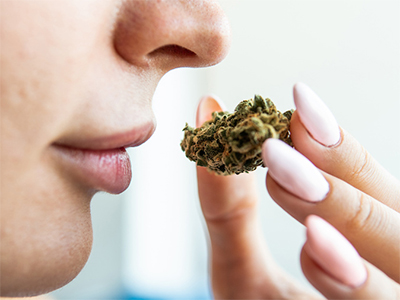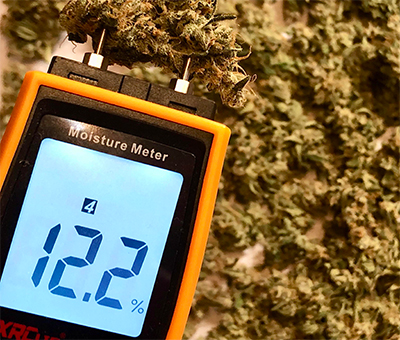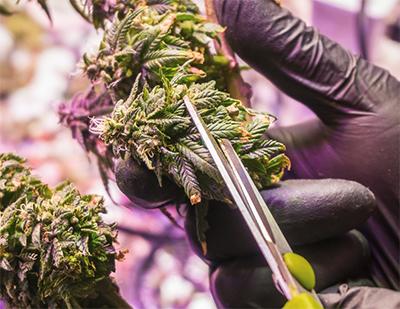Curing cannabis is an essential yet often overlooked step in the cultivation process. While many growers focus intently on planting, tending, and harvesting their crops, the final post-harvest phase – curing – can make the difference between a mediocre product and a premium one. Proper curing enhances flavor, preserves potency, and ensures long-term storage without degradation. This article dives into the science behind curing cannabis, explains why it’s crucial, and outlines the best practices to achieve the highest quality results.
What is Cannabis Curing?
Curing is the process of carefully drying and aging harvested cannabis flowers to refine their chemical composition and improve overall quality. This method is commonly used for tobacco, fine meats, and wines, and cannabis benefits just as much from this post-harvest treatment. The primary goal of curing is to gradually remove moisture from the buds while preserving terpenes (the compounds responsible for aroma and flavor) and cannabinoids (the compounds responsible for the effects of cannabis).
Why Curing is Essential
Without proper curing, even the best-grown cannabis can yield harsh smoke, undesirable flavors, and diminished effects. Here are a few reasons why curing is indispensable:
1. Enhances Flavor and Aroma
 Terpenes are volatile compounds that easily degrade if exposed to excessive heat, air, or light. By curing cannabis at a controlled pace, the terpenes are preserved, resulting in a richer, more complex flavor and aroma profile. A well-cured strain retains its distinct characteristics, providing an enjoyable sensory experience for the user.
Terpenes are volatile compounds that easily degrade if exposed to excessive heat, air, or light. By curing cannabis at a controlled pace, the terpenes are preserved, resulting in a richer, more complex flavor and aroma profile. A well-cured strain retains its distinct characteristics, providing an enjoyable sensory experience for the user.
2. Improves Potency and Effects
During the curing process, the cannabinoids in cannabis continue to undergo chemical transformations. For example, THCA (tetrahydrocannabinolic acid) gradually converts to THC, the compound responsible for psychoactive effects. Proper curing allows this process to reach completion, ensuring the final product is as potent as possible.
3. Reduces Harshness
Freshly harvested cannabis can contain residual chlorophyll and other unwanted compounds that contribute to a harsh, unpleasant smoke. Curing helps break down these compounds, resulting in smoother smoke that is gentler on the throat and lungs.
4. Prevents Mold and Bacteria
Proper curing reduces the moisture content of cannabis buds, making it less susceptible to mold and bacterial growth. This not only protects the integrity of the product but also ensures it can be safely stored for months without degrading.
The Science Behind Curing
The curing process is rooted in biological and chemical changes that occur within the cannabis plant post-harvest. Understanding these mechanisms helps cultivators refine their methods for optimal results.
1. Moisture Redistribution
 Initially, the outer layers of cannabis buds dry faster than the interior. Curing allows moisture from within the bud to redistribute, ensuring even drying and preventing the outer layers from becoming too brittle. This gradual moisture release helps preserve terpenes and cannabinoids.
Initially, the outer layers of cannabis buds dry faster than the interior. Curing allows moisture from within the bud to redistribute, ensuring even drying and preventing the outer layers from becoming too brittle. This gradual moisture release helps preserve terpenes and cannabinoids.
2. Chlorophyll Breakdown
Chlorophyll, the pigment responsible for the green color in plants, degrades during curing. As chlorophyll breaks down, the harsh, grassy flavors often associated with fresh cannabis dissipate, allowing the true flavors of the strain to emerge.
3. Conversion of Cannabinoids
Curing provides the ideal environment for cannabinoids to continue developing. THCA slowly decarboxylates into THC over time, enhancing potency. Similarly, CBDA (cannabidiolic acid) converts to CBD, contributing to the overall chemical complexity of the strain.
How to Cure Cannabis Properly
Curing cannabis involves patience, attention to detail, and a controlled environment. Here’s a step-by-step guide to ensure successful curing:
1. Harvest and Initial Drying
- After harvesting, trim excess fan leaves and hang the buds upside down in a dark, cool, and dry environment. The optimal drying temperature ranges between 60-70°F (15-21°C) with a humidity level of 50-60%.
- This initial drying phase typically lasts 7-10 days. The buds are ready for curing when the small stems snap rather than bend.
2. Trimming and Jar Storage

- Once dried, trim the buds to remove any excess sugar leaves.
- Place the trimmed buds into airtight glass jars, filling them about 75% full to allow for some air circulation.
- Store the jars in a cool, dark place away from direct sunlight.
3. Burping the Jars
- For the first two weeks, open the jars (known as “burping”) once or twice daily for 10-15 minutes. This releases built-up moisture and replenishes oxygen, aiding in the curing process.
- After the initial two weeks, burp the jars every few days for the next month.
4. Long-Term Curing
- While noticeable improvements occur within the first month, curing for 2-3 months enhances the overall quality further. Some connoisseurs cure cannabis for six months or longer to achieve peak flavor and smoothness.
Common Mistakes to Avoid
Even experienced growers can encounter pitfalls during curing. Here are a few mistakes to watch out for:
- Rushing the Process: Speeding up the drying or curing process can lead to harsh flavors and lower potency.
- Over-Drying: Buds that are too dry lose their terpenes and become brittle, negatively impacting flavor and effects.
- Excess Moisture: If buds are jarred too early, mold and mildew can develop. Ensure proper initial drying before beginning the curing process.
- Inconsistent Burping: Forgetting to burp the jars can result in uneven curing and reduced quality.
The Role of Technology in Curing
As cannabis cultivation advances, technology has begun to play a role in refining the curing process. Humidity packs, hygrometers, and automated curing systems help maintain optimal humidity levels and reduce the margin for error. These tools enable growers to achieve consistent results, ensuring top-tier cannabis quality.
Final Thoughts
Curing cannabis is both an art and a science, requiring patience and precision. For cultivators and enthusiasts alike, understanding and mastering the curing process can elevate the quality of the final product, transforming good cannabis into exceptional cannabis. By investing time and care into curing, growers can ensure their strains stand out in terms of flavor, potency, and overall experience.
Whether you’re growing at home or sourcing from reputable dispensaries, always appreciate the craft behind well-cured cannabis – it’s what separates the ordinary from the extraordinary.

